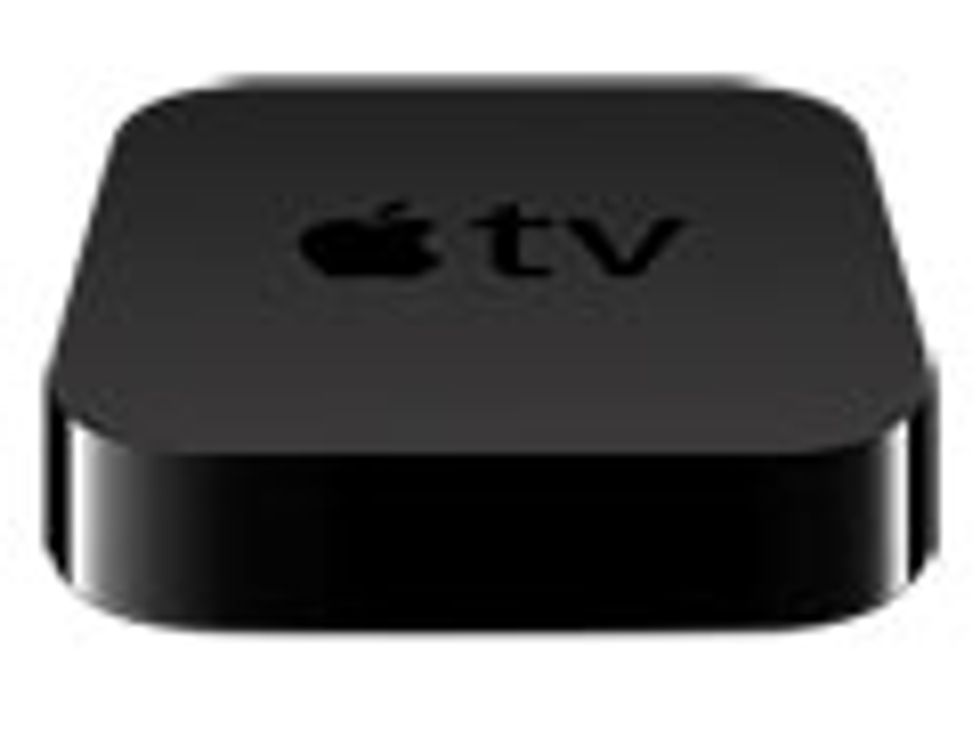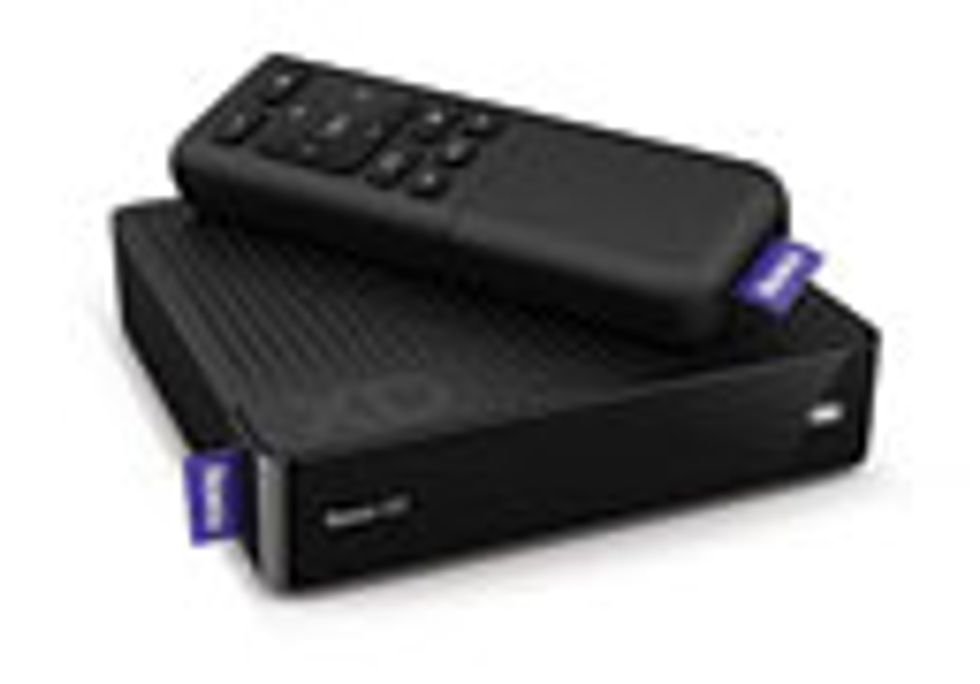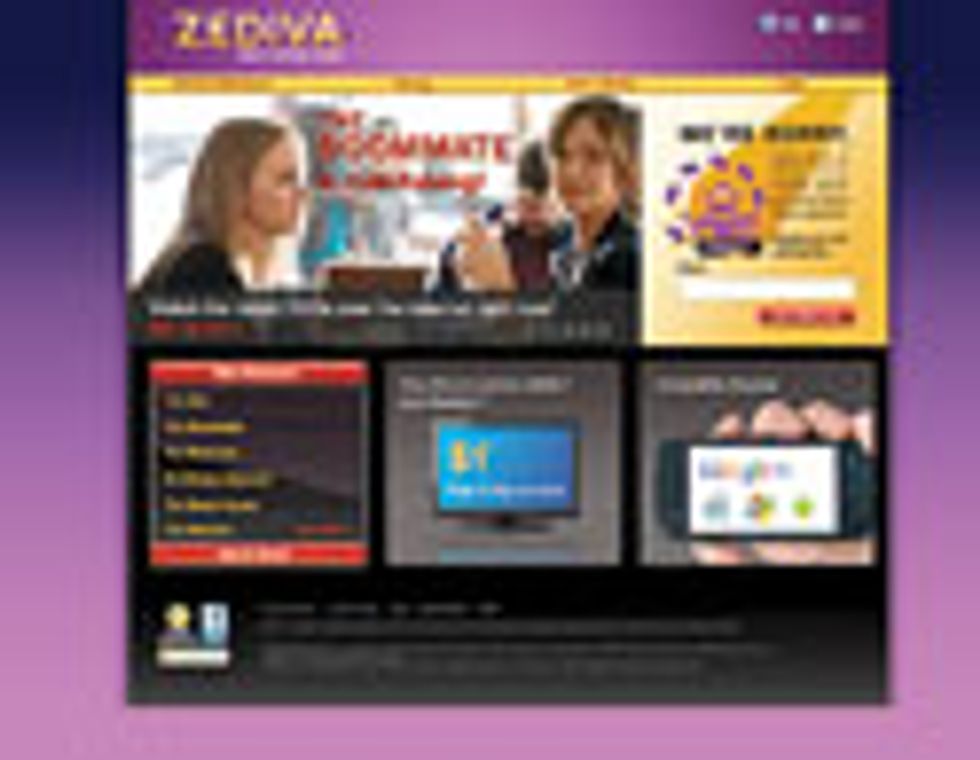Apple iPad https://apple.com/ipad; US $500 and up
What It Does: Tablet computer; plays Internet-based content, iTunes, and content from some cable networks.
Quality: 1024 by 768 pixels (9.7-inch display); up to 1080p with Apple Digital AV Adapter
Apple TV https://apple.com/appletv; $100
What It Does: Stand-alone device that links broadband connection to television.
Quality: AirPlay to AppleTV, 720p; with Digital AV adapter, 1080p
Logitech Revue with Google TV
https://logitech.com/en-us/smartTV/revue; $300
What It Does: Stand-alone device that links broadband connection to television.
Quality: 1080p; HDMI output
Roku https://roku.com; $60–$100
What It Does: Gateway to Hulu, Netflix, and other Web-based services.
Quality: 1080p; HDMI output
Vudu https://vudu.com; $2 per movie for two nights
What It Does: Promises the largest selection of HD movies and availability same day as DVD release.
Quality: 1080p; HDMI output
WhereverTV https://wherever.tv; Free
What It Does: Browser-based channel guide to thousands of TV stations on the Internet, sortable by country, language, and genre.
Quality: Browser and PC dependent
WhereverTV receiver https://wherever.tv; $200
What It Does: Tiny box provides WhereverTV channel guide that links broadband connection to television.
Quality: Composite and S-Video
Zediva https://zediva.com; $2 for 14 days; 10 movies for $10
What It Does: Works with any browser, including Google TV. Promises new movies same day as DVD release.
Quality: 480p, but quality will be browser and PC dependent
In the 1970s, growing up in New York City, one of my favorite toys was a Norelco shortwave radio, a present from my father, who was born in Austria. I would tune in to radio broadcasts from the BBC World Service and the Deutsche Welle. It was a thrill to listen to broadcasts from far-off lands.
In 2001, I came across the modern-day equivalent—an Internet radio player. I soon found I had little use for terrestrial radio, although I still watched television the traditional way, via my cable provider.
I first started looking around for alternatives to cable TV in 2005, when German TV, a premium cable channel available in the United States, was shut down. Surely my favorite German shows must be available online, no? A Web search revealed the answer: a firm maybe. I was able to find some shows on the Internet, but not others. While I kept my cable service, I also uncovered a wealth of online television content from around the world.
Of course, I wanted to watch these programs on my shiny new 42-inch Sony flat-screen TV, so I connected an old IBM ThinkPad directly to the Sony. Picture quality ranged from poor to okay if viewed at a distance. It was like the thrill of listening to shortwave radio all over again.
In 2007 Steve Jobs introduced Apple TV, claiming it was "like a DVD player for the 21st century." This was an exaggeration, but Apple TV proved a good way to view my collection of digital movies. Soon, Apple had made deals with the major movie studios to rent films through iTunes. Between the ThinkPad and Apple TV, I found myself watching more and more on TV without turning on the cable box.
I soon added boxes from Roku and Vudu, which allowed me to push more movies and TV shows onto my TV. (Vudu no longer makes a dedicated box, but it still offers a premium online movie service; Roku currently offers a variety of services, including movies from Amazon.com and Netflix as well as Hulu.) Then, in 2008, I came across the WhereverTV receiver, a small set-top box that provides a sophisticated channel guide that cuts across dozens of countries and thousands of broadcasters. Now we were talking! The only strikes against the WhereverTV box were the quality of the image—which depends on the sender of the video—and the lack of Flash support.
In 2009 Verizon FiOS, a fiber-optic broadband, telephone, and video service, came to my New York City neighborhood. FiOS was faster, which greatly improved the quality of online video. But I still lacked a good way to marry my flat screen to the Internet, because more and more broadcasters were relying on Flash, something the WhereverTV box couldn't handle. So even with FiOS, I was still watching a lot of shows on a large computer display.
My dream of a better IPTV set-top box was finally realized in 2010 with the Logitech Revue with Google TV. While Google bills Google TV as a tool to search the Web, I view it and its Chrome browser as a window to Internet television.
Today I can watch almost anything found on a website on my television. The major exceptions are the U.S. television networks, which currently block Google TV. The networks' stance is inconsistent, because they make many of these shows accessible via Hulu, a content aggregator owned by News Corp. (Fox), Walt Disney (ABC), and NBC Universal, among others. Were I to connect my laptop to the TV in place of the Logitech box, I could easily watch the same shows on Hulu or often the networks' own websites on the very same screen. Google TV itself blocks nothing, so a viewer can watch pirated copies of the very same shows on such websites as Surfthechannel.com.
The paid version of Hulu—Hulu Plus—charges US $7.99 per month for unlimited access to 40 current shows, plus thousands of older programs (I found the original episodes of "Adam-12," for example). CBS News has a free app that provides video programming from the "CBS Evening News," "Face the Nation," "48 Hours," and "Sunday Morning," among others. If I want to watch "60 Minutes" on the iPad, however, I have to buy the app for a one-time fee of $4.99. ABC similarly offers an iPad app with a mix of free programs and others that can be bought on iTunes.
In some cases, I can take movies and videos playing on the iPad and stream them to Apple TV, and thence to my TV screen, using Apple AirPlay. Sadly, this doesn't work with Hulu and the broadcast network apps.
Now the iPad is becoming a battleground that may determine how television programs are viewed in the United States. Both Time Warner and Cablevision Systems Corp. have in recent months released apps that allow their subscribers to view content on the iPad itself, in essence turning the iPad into a TV. The Time Warner app has multiple limitations—you have to subscribe to television and broadband services, and the app functions only in your home. Even so, some content owners have objected, forcing Time Warner to remove content. The Cablevision app tries to mirror the content that would be available on the subscriber's TV set and doesn't require the subscriber to have Cablevision's broadband service.
All these tricks still aren't enough to free us from traditional TV, but the bonds will continue to loosen. For example, Mark Cavicchia, president of WhereverTV, told me that the company plans to transform its guide so that it works with Roku and Boxee (a freeware home theater program) and, eventually, Google TV.
However, there's a downside to cutting the cord—it could starve programmers and thus induce them to take their content off-line. "More than 50 percent of a programmer's income is derived from cable subscriptions. As people cut ties to the cable companies, the programmers will naturally reduce what can be accessed for free," says Larry Thaler, president of Positive Flux, a consultancy that helps media companies deal with the changing landscape.
My experience with IPTV may not be the norm, but it most likely portends the future of the industry. Companies such as Apple and Google have seemingly cracked the code in terms of selling apps and entertainment. Netflix, whose postal delivery of DVD rentals killed off Blockbuster, has already figured out that the secret to movie rentals is to stream them over the Net, seemingly via any and all devices, including many Blu-ray players. Can other content be far behind? Meanwhile, a new company, Zediva, "rents" DVDs over the Net, giving online viewers access to movies the same day they are released on DVD.
For now, Internet TV augments rather than displaces the traditional television experience. I believe we'll come to see a hybrid model, in which we'll buy fewer premium channels and services from traditional TV providers and go online for more and more of our entertainment. The only problem that remains is how we'll pay for it.
Watching TV via the Net is an adventure. Just as I had to adjust the aerial of my Norelco shortwave radio, sometimes I have to reboot the Revue Google TV box or reload a Web page half a dozen times in order to get good "reception." But it's worth the trouble.
About the Author
Jonathan B. Spira is the founder of Basex, a think tank that ponders business productivity. In his book Overload!, he describes information overload as "death by a million paper cuts." The book has a curious effect on people: "On flights, people start pouring their hearts out, telling me how overloaded they are. I become a personal therapist," he says.








